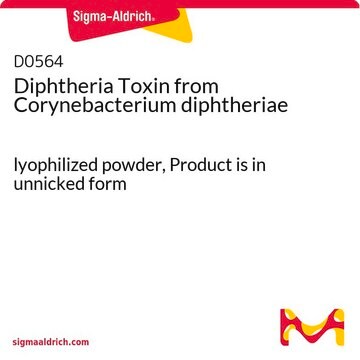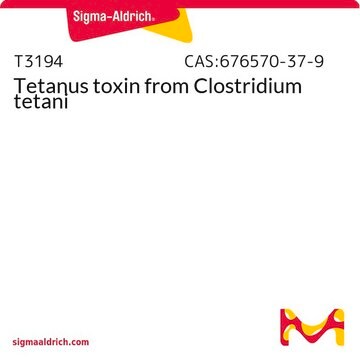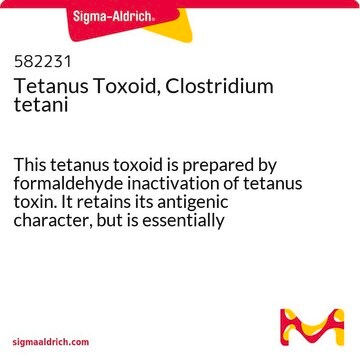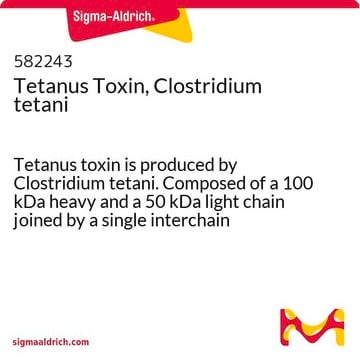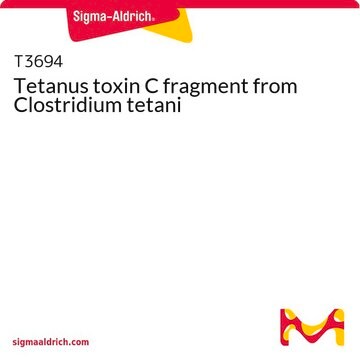Product No. D0564 is the wild-type toxin and possesses enzymatic activity. The Glu52 diptheria toxin, also known as CRM197, has a mutation in fragment A (a glycine to glutamic acid substitution at position 52) that results in the complete loss of enzymatic activity. More information on the mutant can be found in the following reference: Uchida, T., Pappenheimer, Jr., A.M. and Harper, A.A., J. Biol. Chem., 248, 3851-3854 (1973).
D2189
Recombinant CRM197 expressed in Pseudomonas fluorescens, [Glu52]- Diphtheria toxin
lyophilized powder
Synonyme(s) :
[Glu52]-Diphtheria toxin from Corynebacterium diphtheriae, CRM 197
About This Item
Produits recommandés
Vous recherchez des produits similaires ? Visite Guide de comparaison des produits
Conditionnement
Forme physique
Code de la classe de stockage
11 - Combustible Solids
Classe de danger pour l'eau (WGK)
WGK 3
Point d'éclair (°F)
Not applicable
Point d'éclair (°C)
Not applicable
Équipement de protection individuelle
Eyeshields, Gloves, type N95 (US)
Faites votre choix parmi les versions les plus récentes :
Déjà en possession de ce produit ?
Retrouvez la documentation relative aux produits que vous avez récemment achetés dans la Bibliothèque de documents.
-
What kind of mutant, is Product D2189, [Glu52]-Diphtheria toxin from Corynebacterium diphtheriae, and how is this product different from Product No. D0564?
1 answer-
Helpful?
-
-
What is the molecular weight of Product D2189, [Glu52]-Diphtheria toxin from Corynebacterium diphtheriae?
1 answer-
On reducing SDS gels, this protein migrates as a single band of an approximate molecular weight of 63,000 Daltons.
Helpful?
-
-
What is the Department of Transportation shipping information for this product?
1 answer-
Transportation information can be found in Section 14 of the product's (M)SDS.To access the shipping information for this material, use the link on the product detail page for the product.
Helpful?
-
-
How do I reconstitute Product D2189, [Glu52]-Diphtheria toxin from Corynebacterium diphtheriae?
1 answer-
The vial can be reconstituted with 1.0 mL of sterile water. Each vial contains 1 mg of Diphtheria toxin CRM mutant, sodium phosphate buffer, and lactose. It can sometimes be hard to get the product into solution due to the lactose used as a stabilizer. The supplier suggests slight warming (to at least room temperature or 30 °C, but not more than 37 °C) followed by a brief vortex to break up the filaments.
Helpful?
-
Active Filters
Notre équipe de scientifiques dispose d'une expérience dans tous les secteurs de la recherche, notamment en sciences de la vie, science des matériaux, synthèse chimique, chromatographie, analyse et dans de nombreux autres domaines..
Contacter notre Service technique